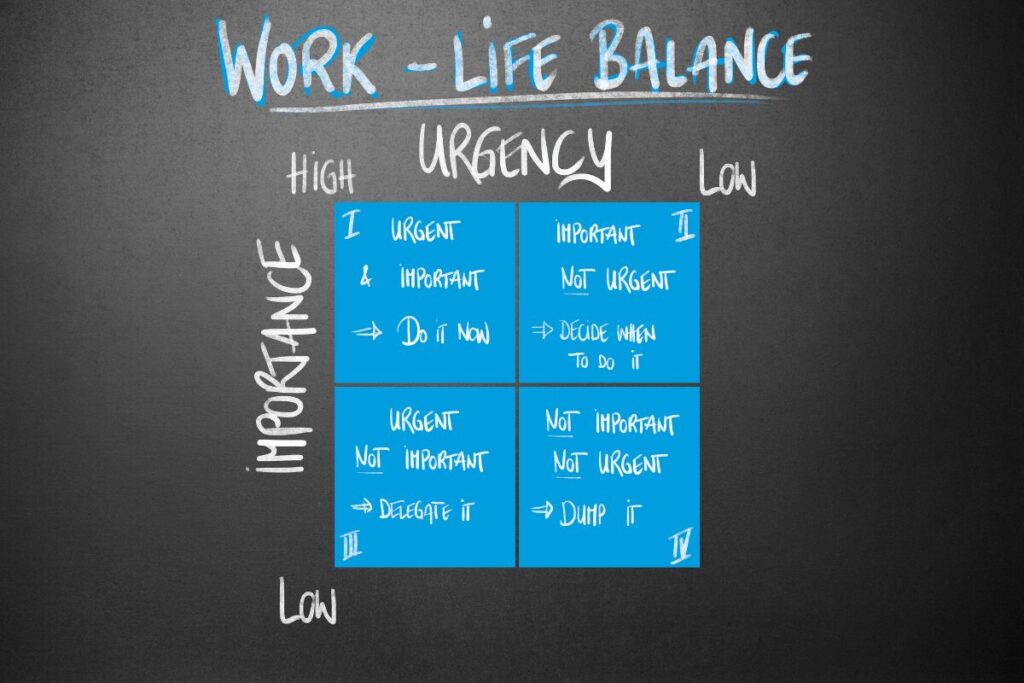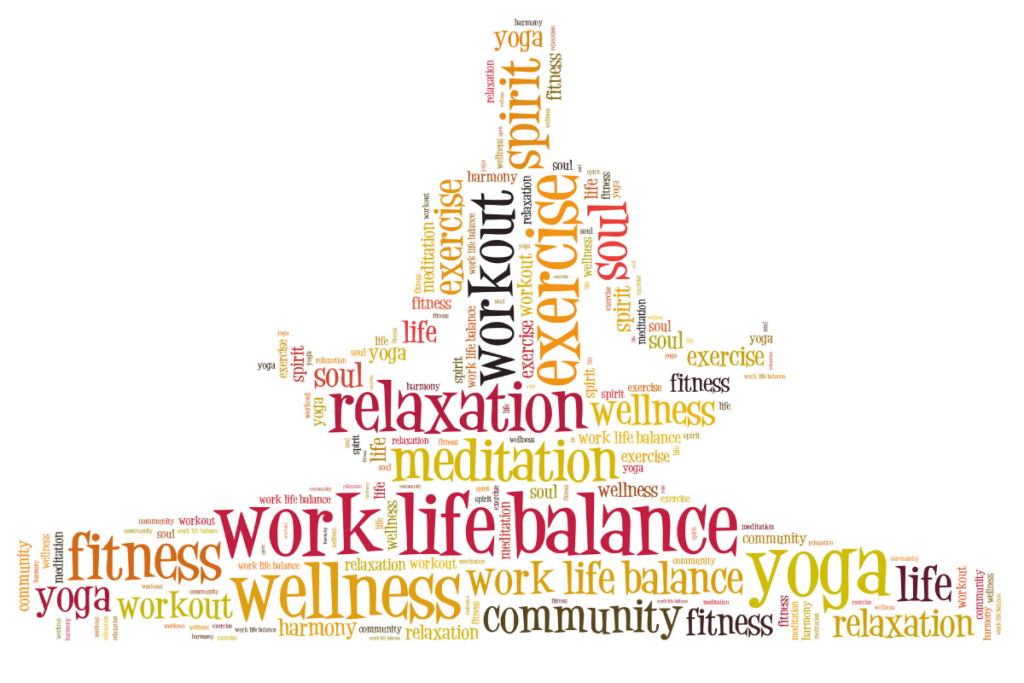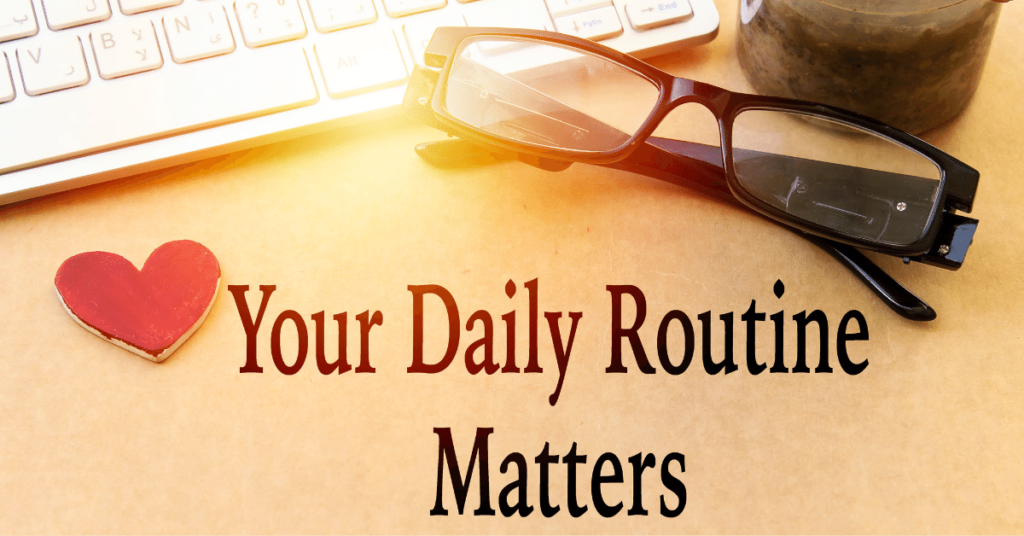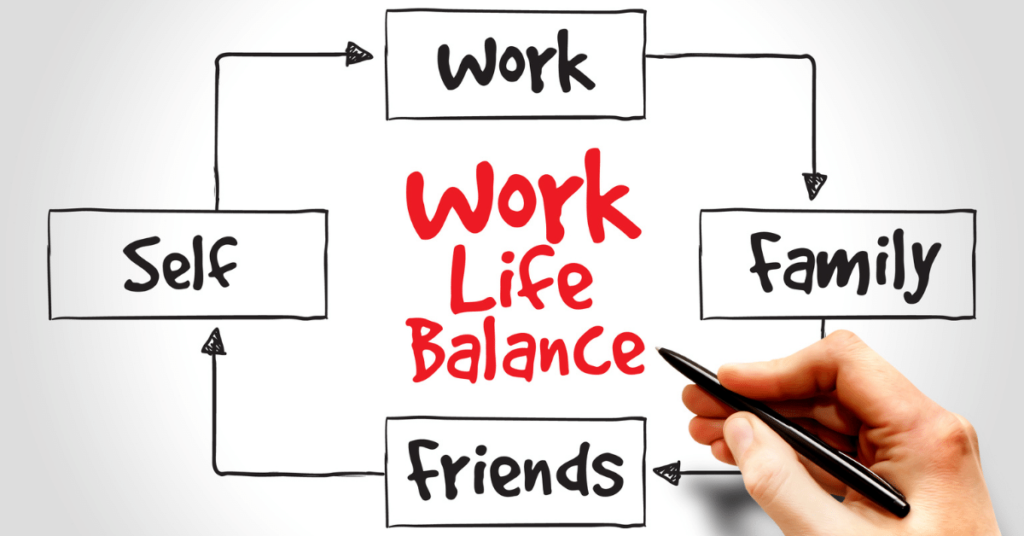In today’s fast-paced world, do you ever feel like you need help to balance your work obligations and nurturing your social connections? Achieving a balance between different aspects of life can be challenging, but it greatly impacts overall well-being and happiness. This article will discuss practical strategies and tips to help you find a greater equilibrium between your professional and social spheres.
Table of Contents
Assessing Your Work Life Balance

Before diving into strategies for achieving greater work-life alignment, assessing any signs that your work and social life are currently out of balance is helpful. Many signs are missed because we become so adapted to them that we don’t see them as something that can indicate a negative or imbalanced situation. Here are some common indicators to watch out for and the way they can impact you:
- Frequently declining invitations or missing social events due to work obligations. This can isolate you from your support network.
- Having little energy left over for hobbies, interests, or activities outside of work. A life consumed by work leaves little room for joy or relaxation.
- Over-relying on takeout instead of home-cooked meals due to a packed schedule. The costs add up, as does the health impact.
- Working evenings and weekends frequently just to catch up on pressing tasks. This prevents true recovery time.
- Experiencing tension, arguments, or complaints from loved ones about your unavailability. Relationships inevitably suffer.
- Feeling anxious and preoccupied with work demands, even during vacations or time off. This prevents you from being fully present.
- Experiencing frequent stress, fatigue, burnout, and other symptoms that signal you do too much. Your health declines.
If several of these indicators resonate with you, it likely signals your work and social life need to be more aligned. But keep hope! You can find your way back to equilibrium with intention and boundary setting. Before diving into strategies to regain balance, it’s important to understand the costs of allowing work and life imbalance to persist. Failing to harmonize your professional and personal spheres can negatively impact your relationships, health, finances, and overall well-being.
The High Costs of Imbalance

As the previous section outlined, there are numerous signs that can indicate your work and social life need to be aligned. Allowing this imbalance to persist can result in significant consequences beyond feeling stressed and tired. Here are some ways an imbalanced lifestyle can negatively impact you and the consequences related to some of those impacts:
- Deteriorating relationships as friends and family feel neglected and disconnected from you. Your social support system weakens.
- Compromised physical and mental health, as unrelenting stress, can lead to anxiety, depression, weight gain, high blood pressure, and more.
- Plummeting productivity and engagement at work. Excessive work causes burnout, eroding your performance.
- A lack of meaning, joy, and satisfaction as you no longer have time to pursue interests and nurture relationships. Life can feel monotonous.
- Decreased overall well-being as imbalance affects physical, mental, and emotional health.
- Financial costs that add up, including takeout meals, childcare help, and medical bills.
The longer you operate in a state of imbalance, the higher these costs become. Taking steps now to harmonize your work and social life can help minimize these downsides before they escalate further. Achieving greater balance offers many advantages, including reduced stress, strengthened relationships, improved health, and increased happiness and meaning. The following section explores the many benefits you can gain by harmonizing your professional and personal spheres.
The Benefits of Balance
Achieving greater equilibrium between your professional and social life offers many advantages that can enrich your overall well-being. Harmonizing your work and personal spheres helps reduce overwhelming stress and lowers your risk of burnout. With balance, you have time for rejuvenation and can diffuse work-related anxiety before it becomes harmful. This keeps your stress levels in a healthy range.

When you balance work, you also spend more time on meaningful relationships and enjoyable hobbies. This increased time focused on the people and activities that bring you joy will naturally boost your mood and happiness. You’ll find greater satisfaction and fulfillment. Balance allows you to prioritize self-care like proper sleep, exercise, nutritious eating, and relaxation. By reducing stress and making space for wellness routines, balance enhances your physical health and emotional well-being. You’ll have more energy and resilience.
Stronger relationships are another benefit. When you free up time to focus on loved ones without distractions, intimacy in your connections deepens. Bonding through shared activities and meaningful interactions strengthens your social support network. In addition, balance helps drive higher engagement and productivity at work. Time away from the office gives you mental space. You return feeling renewed and focused, allowing you to excel in your career.

Lastly, balance provides a greater sense of meaning and purpose. While professional accomplishments are important, dedicating time to explore interests and nurture relationships provides fulfillment that work alone cannot. The many benefits of balance demonstrates why harmonizing your work and life is so critical for your health and happiness. Harmonizing your work and social life allows you to excel in both spheres. You can show up as your best self with the energy to perform at work and nurture meaningful relationships. Seeking balance helps you maximize your well-being.
Now that we’ve looked at ways to assess your work-life balance and explored both the costs of imbalance and the many benefits balance provides, it’s time to outline strategies you can apply to regain alignment between your professional and personal life. By taking active steps to harmonize your work and social spheres, you can minimize the downsides of imbalance while unlocking the many advantages of greater equilibrium. The following section details practical techniques to bring your lifestyle back into balance.
Strategies to Regain Balance

Finding harmony between the demands of your career and nurturing your personal connections can be challenging. Still, it is possible with intention and boundary setting. By integrating the following strategies, you can regain control and bring your work and social life back into alignment.
Start with small, sustainable changes rather than overhauling everything at once. Be patient with yourself – restoring balance takes time. But progress will compound, and soon, you’ll find greater fulfillment in your professional and social spheres.
Reflect on Priorities
Take time to identify your personal and professional priorities. Is your calendar truly aligned with what matters most? Are you spending enough time on key relationships and activities? Reflection will illuminate any misalignment so you know what needs to change.
Set Clear Boundaries
Establish work hours and communicate clear expectations about your availability after hours and on weekends. Don’t hesitate to set firm limits on extra duties, overtime, weekend work, and being contacted during personal time. Protect time for rejuvenating activities.
Calendar Diligently

Carefully block time on your calendar for work projects, social activities, self-care, and other priorities. Scheduling forces you to visualize time allotments and prevents double booking. Sync work and personal calendars to catch scheduling conflicts.
Build Transitions
Create consistent routines for transitioning out of “work mode.” Changing clothes, walking, or leaving your home office when work is done can help compartmentalize work vs. personal time. These mental shifts require intention.
Manage Your Energy
Take note of when your energy levels peak during the day. Do heads-down work during periods of high energy. Save meetings for lower energy times. Match activities to energy levels to be more productive.
Automate and Delegate
Leverage tools to automate repetitive tasks. Identify tasks to delegate at work and home duties to outsource, like meal prep or cleaning. This reduces non-essential tasks from monopolizing your time and energy.
Just Say No

Practice declining invites and requests that don’t align with your priorities or availability. Say no without guilt or excuses. Protecting your time and interests prevents overcommitting. Offer alternative meeting times to avoid declining completely.
Unplug Consciously
Make a point of fully unplugging from work when spending time with friends and family. Silence work phone notifications and close your laptop to avoid the temptation to multitask. A focused presence will nurture relationships. Tell others you are minimizing distractions.
Refuel Through Hobbies
Ensure you make time for activities outside work that energize and fulfill you, like reading, crafting, or playing sports. Build these fun interests into your routine. They provide an outlet for stress and a sense of joy beyond work.
Communicate Needs

Have open dialogues with managers, colleagues, friends, and family to communicate priorities, capacity, boundaries, and needs. Renegotiate expectations as circumstances change. Enlist support in improving balance. Discuss any concerns about unhealthy work demands.
Leverage Technology Wisely
Use productivity apps judiciously to make routine tasks efficient. But beware of getting sucked into social media black holes, which drain time and energy. Disable notifications on your phone during non-work time. Limit app usage when spending time with others.
Bringing work and life into equilibrium requires commitment, but the benefits for your health and relationships make it worthwhile. Don’t let setbacks deter you. With consistent effort, you can achieve the harmony and balance you desire.
Cultivating Daily Balance Habits

“My mornings set the tone for my whole day. I start with 10 minutes of meditation to ground myself, then do some quick yoga stretches. Making breakfast and eating with my family energizes me before diving into work. It’s my daily ritual for balance.” – Julia, 32, Nonprofit Program Director.
Establishing small yet intentional habits and rituals can help sustain work-life balance daily. Incorporate a mix of balanced behaviors into your mornings, during the workday, and evening routines.
For example, your morning routine might include:
- Reflecting on priorities the night before
- Setting an intention while drinking your morning coffee
- Stretching or meditation to start the day mindfully
During the workday, you could aim to:
- Follow your calendar schedule
- Take a short walk every 90 minutes
- Have lunch away from your desk
Some evening habits that could help are:
- Disconnecting from work by a set time
- Sharing a relaxed meal with your family or friends
- Limiting time spent on your phone
Refer to this table for more examples of habits to cultivate balance:
| Morning Rituals | During Workday | Evening Rituals |
|---|---|---|
| Spend time planning | Take regular breaks | Disconnect from work |
| Set intentions | Check emails on schedule | Share family meals |
| Exercise or meditate | Avoid distractions | Spend time with loved ones |
| Eat a nutritious breakfast | Focus on high-priority tasks | Engage in hobbies |
| Review calendar | Have lunch away from the desk | Practice self-care |
You reinforce balanced behaviors by instilling small, consistent changes in your daily routine. Celebrate any progress! Over time, the compounding effect will drive greater alignment.

Overcoming Common Obstacles
The path to work-life balance is filled with potential roadblocks. Below are some of the most common obstacles that can throw you off course, along with tips to tackle them.
When Perfectionism Creeps In
Unrealistic standards for your performance, both at work and at home, can drive imbalance. Perfectionism demands an unsustainable level of effort. Learn to accept “good enough” sometimes – your family and colleagues aren’t judging you as harshly as you judge yourself.
The Struggle to Delegate
When someone strongly tends to control or micromanage things, they often struggle to delegate tasks to others. This can lead to them becoming overloaded with work and feeling overwhelmed. Start slowly handing off small tasks to build trust. Identify opportunities to mentor others to take over responsibilities.
When You Can’t Say No
The guilt and pressure of agreeing to extra duties hinder balance. Decline politely without apologies or excuses. Offer alternative dates and look for win-win compromises. Remember, you can’t be all things to all people.
Battling Distraction

Constant social network connectivity fragments your focus with frequent pings, notifications, and rabbit hole clicks. Consciously unplug, turn off notifications, and minimize distractions to stay centered.
Losing Sight of Priorities
Without intention, urgent tasks constantly override important goals. Take time to regularly reflect on what matters most. Check that how you spend your time aligns with your priorities.
When Workplace Culture Doesn’t Support Balance
Unhealthy expectations for excessive work hours undermine balance. Seek leaders modeling balance. Discuss concerns openly. Consider a career change if needed.
Pinpoint which obstacles derail you. Conquer challenges with commitment to priorities and proactive solutions. You’ve got this!
Seeking Employer Support

While you are ultimately responsible for your work-life balance, supportive employers can make it easier. Have open conversations with managers about how they can assist you in finding greater equilibrium.
You could start by asking about flexible arrangements – discuss options like condensed schedules, flex hours, or occasional work-from-home days. Even small amounts of flexibility help you better align your work and personal life.
Inquire about modeling healthy boundaries around email availability, meetings, and work hours. Managers who lead by example with strong boundaries make finding balance easier for the whole team. Along with flexibility and modeling, ensure you fully utilize your paid vacation time and mental health days. Encourage a culture where taking needed time off is respected and normalized.
If excessive work results from understaffing or overburdening employees, consider advocating for more reasonable workloads. No one can sustainably work nonstop. Ask about wellness initiatives like stress management workshops, counseling benefits, standing desks, and wellness challenges. Healthy employees are more engaged and productive.
While you want employer support, remember you are ultimately responsible for your boundaries. Focus first on what you can proactively control.
In Summation
Today’s nonstop world poses very real challenges to balancing meaningful work and social connections. But with intention, boundaries, and commitment to self-care, you can achieve greater harmony between your professional and personal life. This will allow you to be healthier, happier, less stressed, and have deeper relationships.

Regaining equilibrium takes effort – there is no quick fix. But progress compounds with consistency. Start with small, sustainable changes focused on your priorities. Celebrate any positive steps forward! Avoid getting derailed by setbacks. Over time, the gains will drive greater alignment and fulfillment.
The strategies outlined equip you with practical ways to move towards work-life balance. But remember, the power lies within you. Your mindset, self-compassion, and belief that balance is possible are just as key. With dedication to daily balanced behaviors, you will thrive in both your work and social spheres.
Live Your Life & Love It!!
Related Article: Focus and Presence: Elevate Productivity and Well-Being
FAQs
What is the work to life balance?
Work-life balance means dividing your time and energy between your job and other important areas, like relationships, health, hobbies, and rest.
What is meant by work-life balance?
Work-life balance means maintaining a healthy equilibrium between your professional career and personal life. Your work shouldn’t consume your whole life.
What causes poor work-life balance?
Poor boundaries, workplace culture, lack of priority/time management, and trouble disconnecting from work are common causes of poor work-life balance.
How do you balance your work-life in a 9 to 5 job?
Stick to work hours as much as possible, take breaks, set email/phone boundaries after hours, utilize time off, maintain hobbies, and prioritize relationships.
What’s the first steps you should take when working to create a work-life balance?
Reflect on your priorities, identify imbalances, and plan specific implementation changes. Start with small, sustainable steps.
What is one step an employee can take to maintain work-life balance by setting clear communication boundaries?
Set specific “off hours” where you won’t respond to work emails/calls. Communicate this boundary to colleagues.









